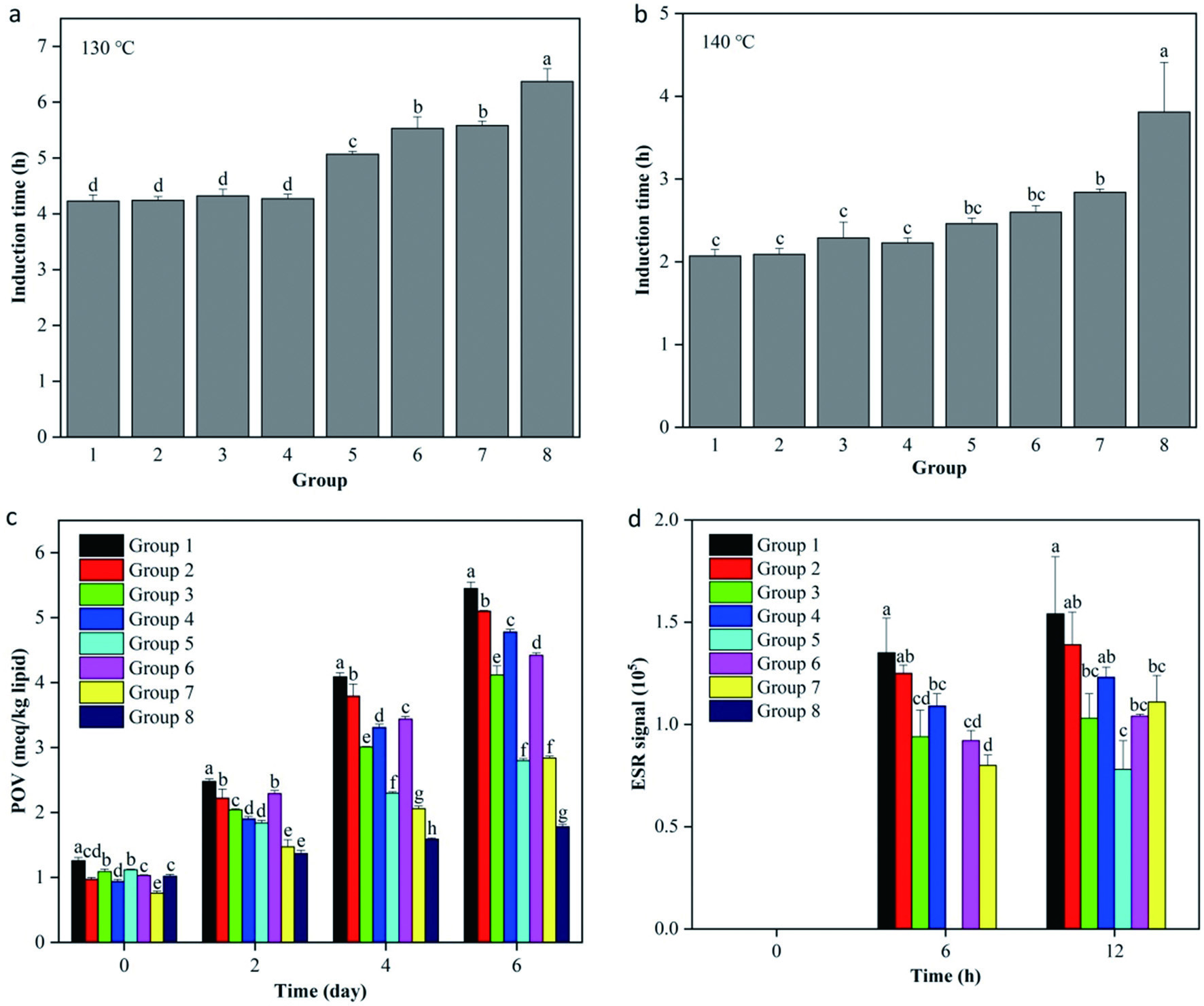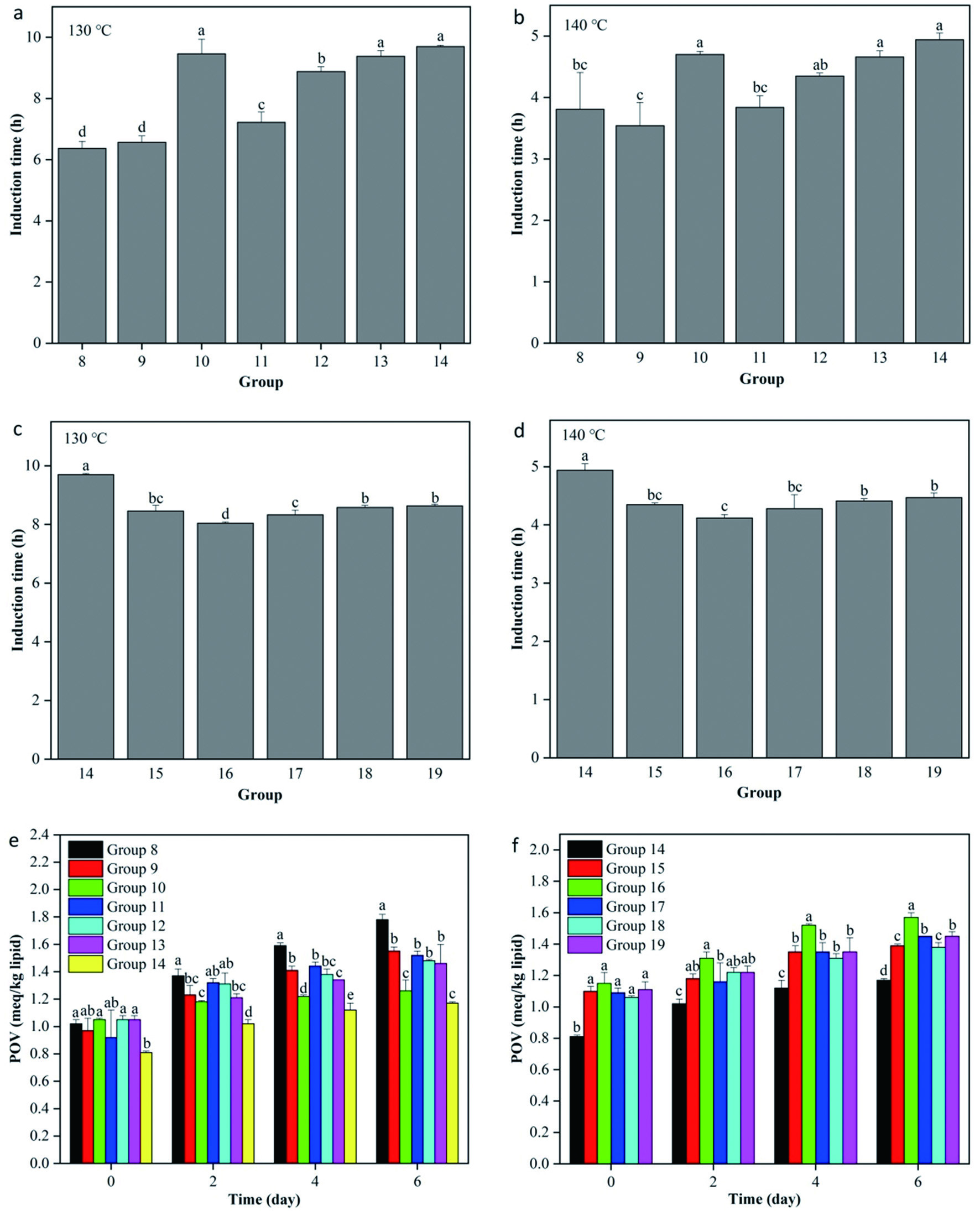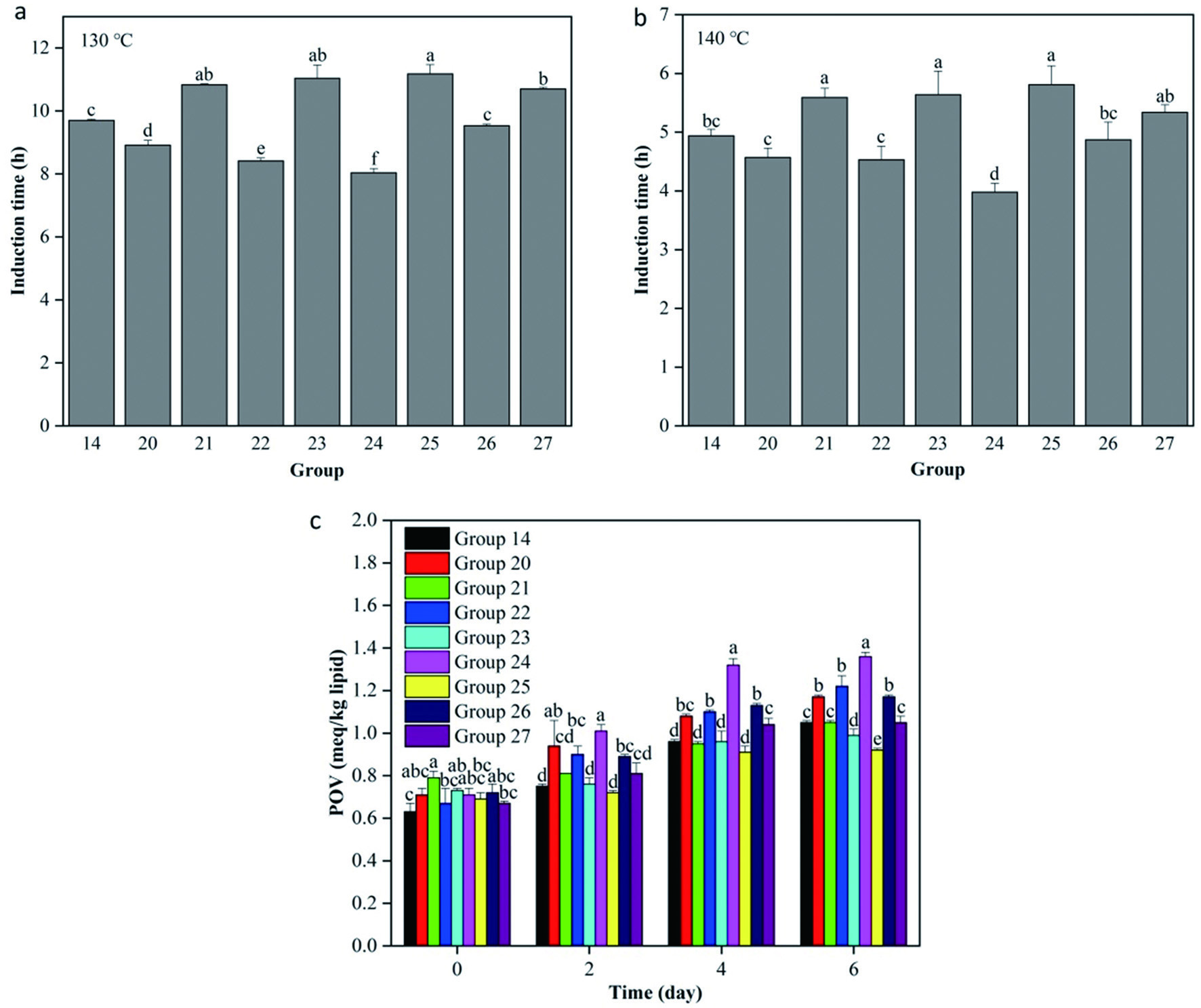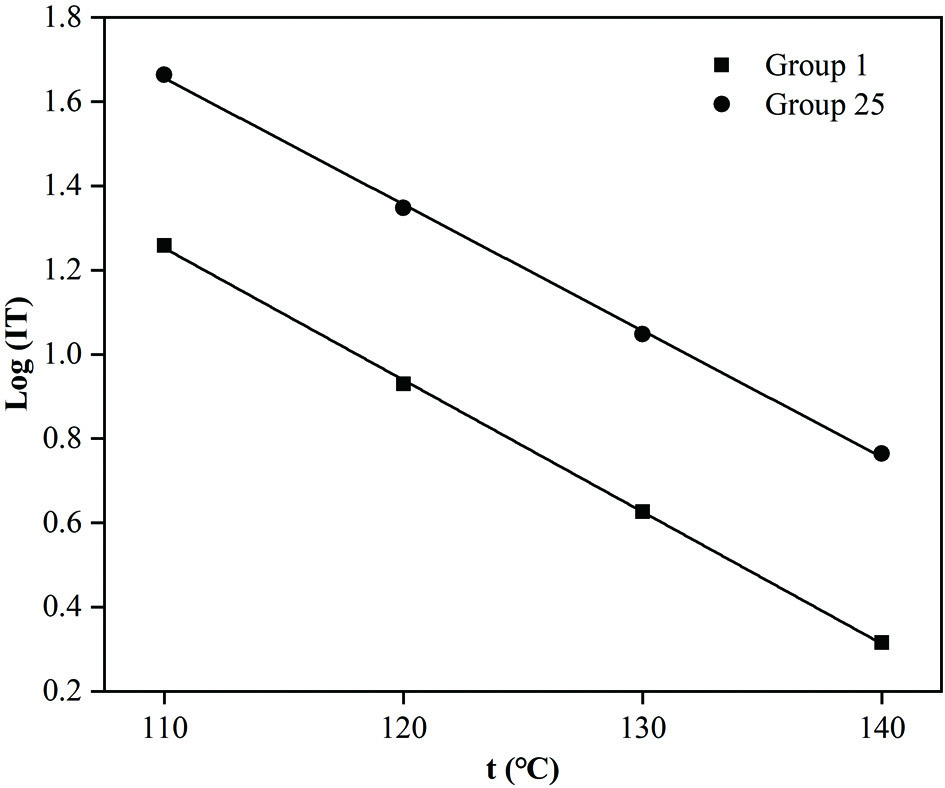Figures

Figure 1. Antioxidant activities of various single antioxidants in high-oleic sunflower oil. A, Rancimat induction time at 130 °C; B, Rancimat induction time at 140 °C; C, Peroxide value (POV) at 55 °C; D, Free radical intensity at 120 °C. Group 1 was the control high-oleic sunflower oil without adding any antioxidants. Groups 2–8 were the high-oleic sunflower oil samples containing vitamin E, phytic acid, antioxidant of bamboo leaves, rosemary extract, tea polyphenols, ascorbyl palmitate and tea polyphenol palmitate, respectively. All experiments were repeated three times. Different letters (a-h) in each panel at same storage time indicate significant differences from each other (P < 0.05).

Figure 2. Antioxidant activities of binary and ternary composite antioxidants in high-oleic sunflower oil. A-D, Rancimat induction time (130 °C and 140 °C); E and F, peroxide value (POV) at 55 °C. Group 8 was the high-oleic sunflower oil sample containing tea polyphenol palmitate (TPP). Groups 9–14 were the high-oleic sunflower oil samples containing TPP and one of the other six antioxidants (vitamin E (VE), phytic acid (PA), antioxidant of bamboo leaves (AOB), rosemary extract (RE), tea polyphenols (TP), and ascorbyl palmitate (AP)). Groups 15–19 were the high-oleic sunflower oil samples containing TPP, AP and one of the other five antioxidants (VE, PA, AOB, RE, and TP). All experiments were repeated three times. Different letters (a-e) in each panel at same storage time indicate significant differences from each other (P < 0.05).

Figure 3. Antioxidant activities of the optimum antioxidants combination containing tea polyphenol palmitate and ascorbyl palmitate with different proportions in high-oleic sunflower oil. A, Rancimat induction time at 130 °C; B, Rancimat induction time at 140 °C; C, peroxide value (POV) at 55 °C. All experiments were repeated three times. Different letters (a-f) in each panel at same storage time indicate significant differences from each other (P < 0.05).

Figure 4. The linear relationship between the natural logarithm of the Rancimat induction time (IT) and the temperature (t). Group 1 was the control high-oleic sunflower oil without adding any antioxidants. Group 25 was the high-oleic sunflower oil sample containing 480 mg/kg tea polyphenol palmitate and 40 mg/kg ascorbyl palmitate.
Table
Table 1. Shelf life (induction time at 25 °C, IT25) and Q10 (increase of reaction rate due to a 10 °C temperature rise) of high-oleic sunflower oil
| Sample | Temperatures | IT (h) | Log (IT) = a(t) + b | IT25 (day) | Q10 |
|---|
| a | b | R2 |
|---|
| Group 1 was the control high-oleic sunflower oil without adding any antioxidants. Group 25 was the high-oleic sunflower oil sample containing 480 mg/kg tea polyphenol palmitate and 40 mg/kg ascorbyl palmitate. |
| Group 1 | 110 °C | 18.14 ± 0.04 | -0.0313 | 4.6972 | 0.9997 | 342.36 | 2.06 ± 0.06 |
| 120 °C | 8.51 ± 0.15 |
| 130 °C | 4.23 ± 0.11 |
| 140 °C | 2.07 ± 0.08 |
| Group 25 | 110 °C | 46.17 ± 1.15 | -0.03 | 4.956 | 0.9994 | 669.56 | 2.00 ± 0.07 |
| 120 °C | 22.27 ± 0.85 |
| 130 °C | 11.18 ± 0.29 |
| 140 °C | 5.81 ± 0.32 |



